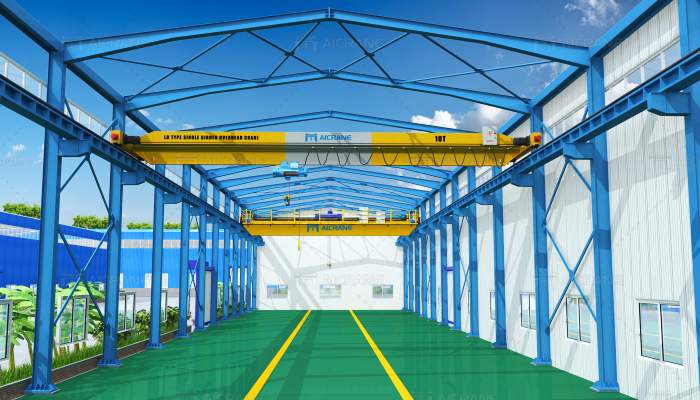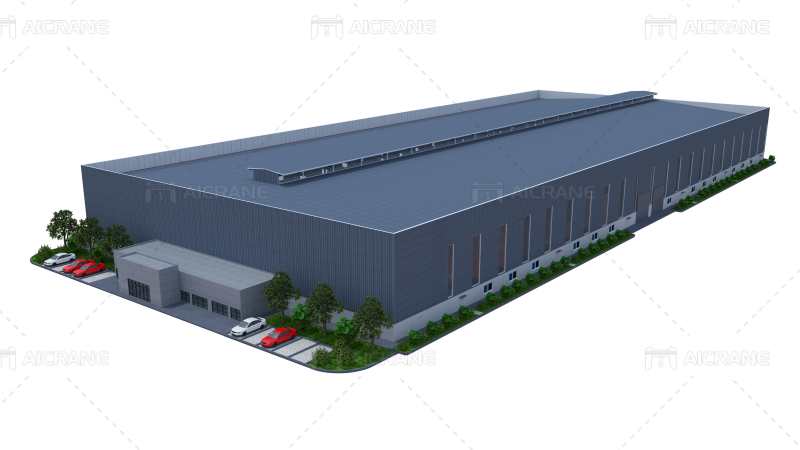In today’s construction industry, sustainability has become a critical consideration for both businesses and developers. With growing concerns over climate change, resource depletion, and environmental degradation, companies are increasingly looking for ways to minimize their carbon footprint and embrace eco-friendly building practices. One area where significant strides have been made is in the construction of steel structure warehouses. Steel, renowned for its durability and strength, is being combined with innovative green building practices to create sustainable, energy-efficient warehouses that meet modern environmental standards. This article explores the role of steel in promoting sustainability and highlights eco-friendly materials and green building practices used in steel structure warehouses.

The Sustainability Benefits of Steel in Warehouse Construction
Steel has long been considered one of the most sustainable building materials due to its high strength-to-weight ratio, recyclability, and energy efficiency. When used in warehouse construction, steel offers numerous benefits:
- Recyclability: Steel is 100% recyclable without losing its quality, making it an ideal material for sustainable construction. Steel structures can be disassembled and the materials reused in new projects, reducing the need for virgin resources.
- Longevity and Durability: Steel structures have a long lifespan, often lasting decades or even centuries. This durability reduces the need for frequent repairs or replacements, conserving resources and lowering maintenance costs.
- Energy Efficiency: Steel’s structural integrity enables the creation of large, open spaces in warehouses, minimizing the need for internal columns or supports. This design flexibility allows for efficient use of space, improving the building’s energy performance and reducing the need for artificial lighting and ventilation.
Eco-Friendly Materials Used in Steel Structure Warehouses
In addition to steel, a variety of other eco-friendly materials can be incorporated into steel structure warehouse designs to further enhance sustainability. These materials not only contribute to the environmental friendliness of the building but also improve energy efficiency and reduce overall operational costs.
- Insulation Materials: Proper insulation is essential in creating energy-efficient warehouses. Insulation materials like spray foam, recycled cotton, or cellulose can be used to regulate temperature and reduce the need for heating or cooling, lowering energy consumption. Some advanced insulation systems are made from renewable or recycled materials, contributing to the building’s sustainability.
- Sustainable Roofing Options: The roof of a steel structure warehouse is a critical component when considering sustainability. Green roofs, solar panel systems, and cool roofing materials can be used to reduce the building’s environmental impact. Green roofs, which are covered with vegetation, can help improve air quality, reduce heat islands, and provide natural insulation. Solar panels can generate renewable energy, lowering the building’s reliance on non-renewable power sources.
- Low-VOC Paints and Finishes: Volatile organic compounds (VOCs) are chemicals found in many traditional paints and finishes that can be harmful to both the environment and human health. By choosing low-VOC or zero-VOC paints and finishes, warehouse developers can reduce air pollution and improve indoor air quality, creating a healthier environment for workers and occupants. There are different types of steel structure buildings, including steel structure warehouse, steel structure workshop, steel structure factory, crane steel structure and more.

Green Building Practices for Steel Structure Warehouses
Beyond the selection of materials, several green building practices can be applied to steel structure warehouses to further enhance sustainability and reduce their environmental footprint. These practices focus on optimizing energy consumption, water usage, and overall building efficiency.
- Energy-Efficient Design: One of the primary goals of green building practices is to reduce energy consumption. For steel structure warehouses, this can be achieved by incorporating energy-efficient design features such as natural daylighting, efficient lighting systems, and advanced HVAC (heating, ventilation, and air conditioning) systems. By using skylights or translucent panels in the roof, warehouses can harness natural light during the day, reducing the need for artificial lighting and saving energy.
- Rainwater Harvesting Systems: Collecting and reusing rainwater is an effective way to minimize water consumption in steel structure warehouses. These systems capture rainwater from the roof and direct it to storage tanks, where it can be used for irrigation, cleaning, or even flushing toilets. This practice reduces reliance on municipal water systems and helps conserve precious water resources.
- Energy Modeling and Simulation: Before construction begins, energy modeling and simulation software can be used to optimize the building’s energy performance. These tools analyze factors such as heating and cooling loads, solar exposure, and airflow patterns to determine the most energy-efficient design. By using energy modeling, developers can ensure that the warehouse operates efficiently from the outset, reducing energy consumption and operational costs.
- LEED Certification and Other Green Building Standards: Achieving certifications such as Leadership in Energy and Environmental Design (LEED) is a way to ensure that a steel structure warehouse meets the highest sustainability standards. LEED-certified buildings are designed to be energy-efficient, water-efficient, and environmentally responsible, with a focus on minimizing resource consumption and environmental impact. By adhering to these green building standards, warehouse developers can demonstrate their commitment to sustainability while also benefiting from incentives and cost savings.
Reducing Carbon Footprint Through Green Construction Practices
Green construction practices extend beyond the materials used in the building itself. Sustainable construction methods aim to reduce the carbon footprint of the entire building process, from sourcing materials to construction and operation.
- Modular and Prefabricated Construction: Prefabricated steel structure components can be manufactured off-site in controlled environments and then assembled on-site. This method reduces waste and construction time while ensuring greater precision and quality control. Prefabrication also reduces transportation emissions, as components can be delivered in bulk, minimizing the number of trips required.
- Low-Carbon Steel Production: While steel production traditionally contributes to carbon emissions, new technologies and processes are being developed to reduce the carbon footprint of steel manufacturing. For example, some steel manufacturers are using renewable energy sources, such as wind or solar power, to reduce emissions during production. Additionally, the use of recycled steel in the production process further lowers the environmental impact.
Conclusion: The Future of Sustainable Steel Structure Warehouses
As environmental concerns continue to rise, the construction industry is adopting more sustainable practices to minimize its impact on the planet. Steel structure warehouses, with their inherent durability, recyclability, and energy efficiency, offer a sustainable solution for modern industrial storage needs. By incorporating eco-friendly materials, green building practices, and energy-efficient designs, these warehouses can significantly reduce their carbon footprint and operating costs while contributing to a healthier environment.
The future of steel structure warehouses lies in continued innovation. As technology advances and green building practices become more refined, the potential for creating even more sustainable warehouses will expand, ensuring that these buildings play a key role in reducing the environmental impact of the construction industry for years to come.
